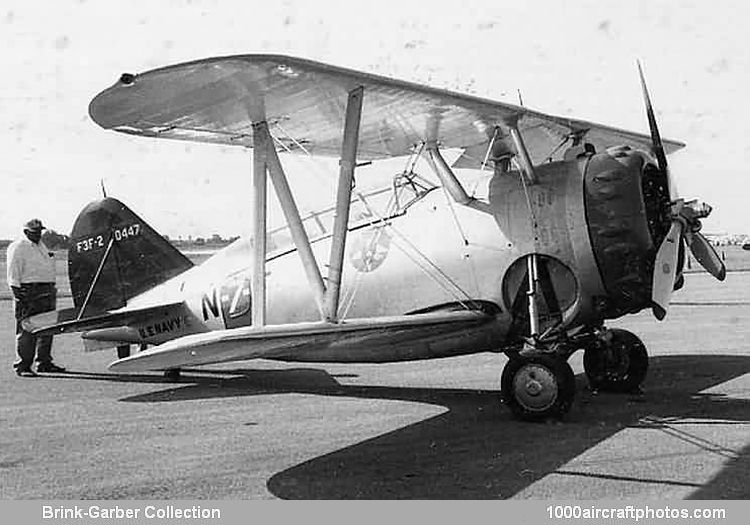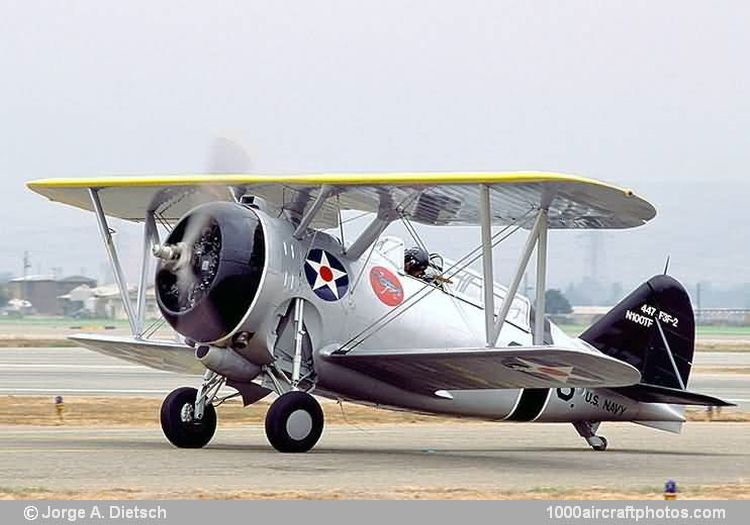07/31/2008. Remarks by Johan Visschedijk: "Two of the three Grumman F3F types built for civil use still exist. The first was the Grumman G-22 of 1936 and presently on display at the Smithsonian. The second was the Grumman G-32, NC1051 c/n 446 and named "Gulfhawk III", built also for the Gulf Oil Company and delivered May 6, 1938.
The third was the pictured aircraft, built as the G-32A using F3F-2 and F3F-3 features combined with a two-seat fuselage and it was fitted with split flaps. The engine was a different version, a 775 hp Wright Cyclone 9 R-1820-F52 nine-cylinder air-cooled radial. It made its first flight on July 1, 1938, registered as NC1326, and was used by Grumman as a demonstration aircraft, an utility transport and photographic platform.
In November 1942, both the G-32 and the G-32A were impressed by the USAAF, designated UC-103, and assigned the s/n 42-97044 and 42-97045 respectively. Initially operated by the First Staff Squadron Headquarters at USAAF Bolling Field, near Washington, District of Columbia, ferrying VIPs, in May 1943 they were transferred to the Caribbean Wing of the Ferrying Command at Homestead Air Field near Miami, Florida, and used as fighter ferry pilot trainers. Both were struck off charge on January 27, 1945.
Acquired by a private owner after WW II, the G-32 force-landed deep in the Everglades, Florida, in October 1948 and was lost. The G-32A came on the civil registry as NC46110 when acquired by Clayton Long, it was sold to Ben Bradley in 1947, and to an unknown person in 1948. It was obtained again by Clayton Long in 1949, and completely restored in 1962. By the time it was acquired by the well-known collector Doug Champlin of Mesa, Arizona, the aircraft was reregistered N7F and the aircraft was guised to simulate an USN F3F-2 in full pre-war colours, with the registration shown as a squadron code: "N-7-T".
On August 7, 1971, the aircraft attended the EAA fly-in at Oshkosh, and while making a flight, the aircraft caught fire. The pilot and passenger parachuted to safety while the aircraft was demolished on impact. However, using the wreckage and three other wreckages recovered from Hawaii, a restoration to flying condition was started in 1988 by the Texas Airplane Factory at Fort Worth.

